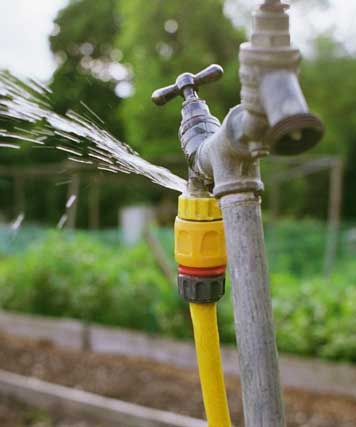How to Inspect If Your House Has a Surprise Leakage
How to Inspect If Your House Has a Surprise Leakage
Blog Article
What're your thoughts and feelings about Locating water leaks?

Early discovery of leaking water lines can alleviate a prospective calamity. Some small water leaks may not be noticeable.
1. Take A Look At the Water Meter
Every residence has a water meter. Examining it is a guaranteed manner in which assists you uncover leakages. For starters, turn off all the water resources. Guarantee nobody will flush, use the tap, shower, run the cleaning equipment or dishwasher. From there, go to the meter and also watch if it will certainly change. Since no person is utilizing it, there should be no movements. That indicates a fast-moving leakage if it moves. Similarly, if you find no changes, wait an hour or more as well as inspect back once again. This suggests you might have a slow leakage that could also be underground.
2. Examine Water Consumption
Analyze your water bills and also track your water consumption. As the one paying it, you need to see if there are any type of discrepancies. If you identify sudden changes, despite your intake being the same, it implies that you have leaks in your plumbing system. Remember, your water expense must drop under the same array each month. A sudden spike in your bill indicates a fast-moving leak.
At the same time, a steady boost monthly, even with the exact same routines, shows you have a sluggish leak that's likewise slowly escalating. Call a plumber to completely inspect your building, especially if you feel a cozy area on your flooring with piping beneath.
3. Do a Food Coloring Examination
When it comes to water consumption, 30% comes from bathrooms. Examination to see if they are running properly. Decrease specks of food shade in the container and also wait 10 mins. If the shade somehow infiltrates your bowl during that time without flushing, there's a leak between the storage tank and dish.
4. Asses Exterior Lines
Don't fail to remember to inspect your exterior water lines also. Needs to water permeate out of the connection, you have a loose rubber gasket. One little leakage can squander lots of water and also increase your water costs.
5. Examine the circumstance and examine
Home owners need to make it a behavior to check under the sink counters and also even inside cupboards for any type of bad odor or mold growth. These 2 warnings suggest a leakage so prompt interest is needed. Doing routine examinations, even bi-annually, can conserve you from a significant problem.
Inspect for discolorations and deteriorating as many pipes as well as appliances have a life expectations. If you suspect leaking water lines in your plumbing system, do not wait for it to escalate.
Early detection of dripping water lines can alleviate a possible disaster. Some small water leaks might not be noticeable. Inspecting it is a proven means that helps you discover leaks. One small leakage can squander tons of water as well as increase your water expense.
If you think dripping water lines in your plumbing system, do not wait for it to rise.
WARNING SIGNS OF WATER LEAKAGE BEHIND THE WALL
PERSISTENT MUSTY ODORS
As water slowly drips from a leaky pipe inside the wall, flooring and sheetrock stay damp and develop an odor similar to wet cardboard. It generates a musty smell that can help you find hidden leaks.
MOLD IN UNUSUAL AREAS
Mold usually grows in wet areas like kitchens, baths and laundry rooms. If you spot the stuff on walls or baseboards in other rooms of the house, it’s a good indicator of undetected water leaks.
STAINS THAT GROW
When mold thrives around a leaky pipe, it sometimes takes hold on the inside surface of the affected wall. A growing stain on otherwise clean sheetrock is often your sign of a hidden plumbing problem.
PEELING OR BUBBLING WALLPAPER / PAINT
This clue is easy to miss in rooms that don’t get much use. When you see wallpaper separating along seams or paint bubbling or flaking off the wall, blame sheetrock that stays wet because of an undetected leak.
BUCKLED CEILINGS AND STAINED FLOORS
If ceilings or floors in bathrooms, kitchens or laundry areas develop structural problems, don’t rule out constant damp inside the walls. Wet sheetrock can affect adjacent framing, flooring and ceilings.
https://www.servicemasterbyzaba.com/blog/how-to-detect-water-leakage-in-walls/

Do you enjoy reading about Detecting hidden plumbing leaks? Give a remark below. We will be interested to find out your opinions about this write-up. We are looking forward that you come back again later on. Do you know about another individual who is interested by Leaking water lines? Take a moment to promote it. Thanks so much for going through it.
Report this page